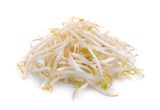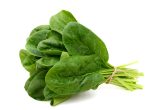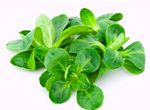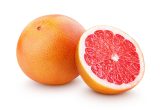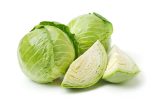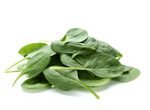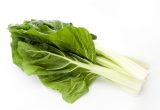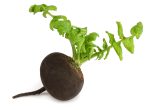Cardoon

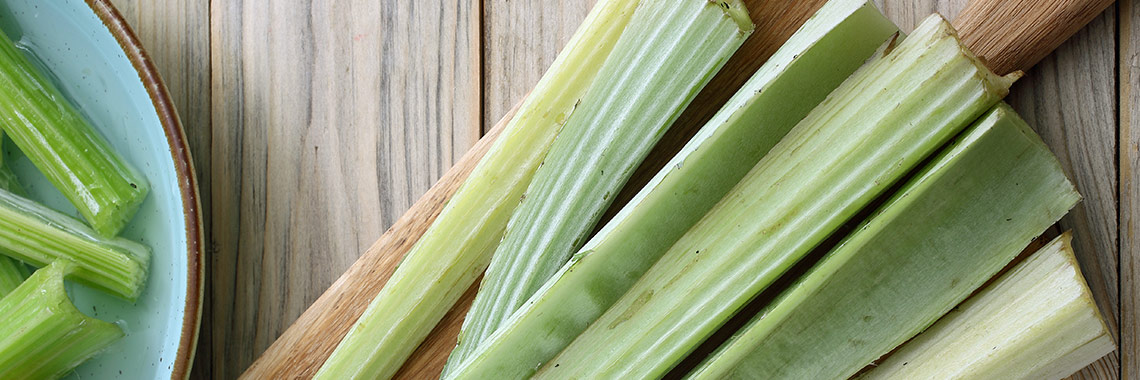
Description
- Cardoon (Cynara cardunculus L. var. altilis DC) belongs to the Asteraceae, like the artichoke.
- This plant is traditionally grown in the Mediterranean region (Gatto, 2013). The cultivation of cardoon is particularly adapted to the arid and semi-arid environment that characterises this part of the world (Grammelis, 2008).
- There are different cultivars of cardoon, including Bianco Avorio, Bianco Gigante Interne and Gigante di Romagna (Colla, 2013).
PHYSICAL AND ORGANOLEPTIC CHARACTERISTICS
- Cardoon is prized for its fleshy leaves and stems (Portis, 2012).
- Among the aromatic compounds identified in cardoon, the latter contains mostly sesquiterpene lactones, a subgroup of bioactive terpenoids characteristic of the Asteraceae family. The most abundant, in cardoon, are cynaropicrin and pentacyclic triterpenes such as taraxasteryl acetate (Ramos, 2013).
- Moreover, sesquiterpene lactones are responsible for its characteristic bitterness (Portis, 2012).
COMPOSITION CHARACTERISTICS (excluding macronutrients, vitamins and minerals)
- Secondary metabolites of sesquiterpene lactones present in cardoon have antioxidant and anti-inflammatory functions (Petropoulos, 2018).
- Cardoon also contains four sterols (stigmasterol, 24-methylenecholesterol, campesterol and Δ(5)-avenasterol) (Ramos, 2013).
- Phenolic profiles showed significant differences between different cardoon genotypes, but apigenin and caffeoylquinic acid derivatives were generally the main molecules found (Dias, 2018).
- Luteolin derivatives, especially present in the leaf, are also characteristic polyphenols of cardoons (Petropoulos, 2018).
- Several studies have shown that a diet high in polyphenols may have beneficial effects against the development of degenerative diseases. This activity has been associated not only with antioxidant and anti-inflammatory properties, but also with additional mechanisms, such as modulation of lipid metabolism and gut microbiota function (Poti, 2019).
- Another important compound characteristic of cardoon is inulin, belonging to the non-soluble fibres, also called fructan. It is considered a functional food due to its role as a prebiotic , its positive influence on mineral absorption and plasma lipid composition, as well as its role in preventing colon cancer (Petropoulos2018).
RAW
The following values are approximate and depend on variety, season, ripeness, cultivation conditions, etc.
In the Ciqual table, the energy values are calculated from the contents of lipids, proteins, carbohydrates, dietary fibres, polyols, organic acids and ethanol, each with a specific energy value. Since raw cardoon is a food in which the presence of polyols and/or organic acids is suspected, and Ciqual does not have compositional data to quantify them, no energy value has been calculated (using the Ciqual 2020 table).
COMPOSITION TABLES
For each nutrient, the tables provide information on the content, minimum and maximum values and the percentage of the Dietary Reference Values (DRVs) per 100 g net of raw cardoon.
MACRONUTRIENTS
Constituent
(g)
Average content
Min-Max
per 100g
DRV%
Water
94
-
-
Fibers
1,60
-
-
Carbohydrates
1,70
-
0,65
Sugars
1,50
-
1,67
Lipids
0,10
-
0,14
Saturated fat
0,011
-
0,06
Protein
0,70
0,63 - NC
1,40
Constituent
(g)
Amount
Min-Max
DRV%
Water
Ciqual 2020
-
-
Fibers
Ciqual 2020
-
-
Carbohydrates
Ciqual 2020
-
Règlement (UE) N°1169/2011 du parlement Européen et du conseil du 25 octobre 2011
Sugars
Ciqual 2020
-
Règlement (UE) N°1169/2011 du parlement Européen et du conseil du 25 octobre 2011
Lipids
Ciqual 2020
-
Règlement (UE) N°1169/2011 du parlement Européen et du conseil du 25 octobre 2011
Saturated fat
Ciqual 2020
-
Règlement (UE) N°1169/2011 du parlement Européen et du conseil du 25 octobre 2011
Protein
Ciqual 2020
-
Règlement (UE) N°1169/2011 du parlement Européen et du conseil du 25 octobre 2011
Zoom on carbohydrates
- The carbohydrate content of raw cardoon (1.70 g per 100 g) is well below the average content in raw vegetables (4.45 g per 100 g).
- Raw cardoon is low in sugar* as it contains less than 5 g per 100 g.
Zoom on fibres
- The fibre content of raw cardoon (1.60 g per 100 g) is lower than the average content in raw vegetables (2.43 g per 100 g).
Zoom on proteins
- The protein content of raw cardoon (0.70 g per 100 g) is lower than the average content in raw vegetables (1.87 g per 100 g).
Zoom on lipids
- The fat content of raw cardoon (0.10 g per 100 g) is lower than the average content in raw vegetables (0.56 g per 100 g).
- Raw cardoon does is fat-free* as it contains less than 0.5 g per 100 g.
*Regulation (EC) No 1924/2006 of the European Parliament and of the Council of 20 December 2006 on nutrition and health claims made on foods.
MINERALS AND TRACE ELEMENTS
Constituent
Average content
Min-Max
per 100g
DRV%
Calcium
(mg)
70
-
8,75
Chloride
(mg)
-
-
-
Copper
(mg)
0,23
-
23
Iron
(mg)
0,70
-
5
Iodine
(µg)
0,095
0,09 - 0,10
0,06
Magnesium
(mg)
42
-
11,20
Manganese
(mg)
0,26
-
13
Phosphorus
(mg)
23
-
3,29
Potassium
(mg)
400
-
20
Selenium
(µg)
0,20
0,15 - 0,25
0,36
Sodium
(mg)
170
-
-
Zinc
(mg)
0,17
-
1,70
Constituent
Amount
Min-Max
DRV%
Calcium
(mg)
Ciqual 2020
-
Règlement (UE) N°1169/2011 du parlement Européen et du conseil du 25 octobre 2011
Chloride
(mg)
-
-
Règlement (UE) N°1169/2011 du parlement Européen et du conseil du 25 octobre 2011
Copper
(mg)
Ciqual 2020
-
Règlement (UE) N°1169/2011 du parlement Européen et du conseil du 25 octobre 2011
Iron
(mg)
Ciqual 2020
-
Règlement (UE) N°1169/2011 du parlement Européen et du conseil du 25 octobre 2011
Iodine
(µg)
Ciqual 2020
-
Règlement (UE) N°1169/2011 du parlement Européen et du conseil du 25 octobre 2011
Magnesium
(mg)
Ciqual 2020
-
Règlement (UE) N°1169/2011 du parlement Européen et du conseil du 25 octobre 2011
Manganese
(mg)
Ciqual 2020
-
Règlement (UE) N°1169/2011 du parlement Européen et du conseil du 25 octobre 2011
Phosphorus
(mg)
Ciqual 2020
-
Règlement (UE) N°1169/2011 du parlement Européen et du conseil du 25 octobre 2011
Potassium
(mg)
Ciqual 2020
-
Règlement (UE) N°1169/2011 du parlement Européen et du conseil du 25 octobre 2011
Selenium
(µg)
Ciqual 2020
-
Règlement (UE) N°1169/2011 du parlement Européen et du conseil du 25 octobre 2011
Sodium
(mg)
Ciqual 2020
-
-
Zinc
(mg)
Ciqual 2020
-
Règlement (UE) N°1169/2011 du parlement Européen et du conseil du 25 octobre 2011
Zoom on minerals and trace elements
- Raw cardoon is a source of:
- copper, as it provides the equivalent of 23% of DRVs, i.e. 0.23 mg per 100 g. According to the Ciqual 2020 table, raw cardoon is one of the vegetables with the highest copper content;
- potassium, as it provides the equivalent of 20% of DRVs, i.e. 400 mg per 100 g.
- Raw cardoon also contains significant amounts of manganese and magnesium. In fact, it provides the equivalent of:
- 13% of DRVs for manganese, i.e. 0.26 mg per 100 g;
- 11.20% of DRVs for magnesium, i.e. 42 mg per 100 g.
- The other minerals and trace elements are present in quantities representing less than 9% of DRVs.
VITAMINS
Constituent
Average content
Min-Max
per 100g
DRV%
Provitamin A Beta-carotene
(µg)
-
-
-
Vitamin A equivalent
(µg)
-
-
-
Vitamin B1
(mg)
0,02
-
1,82
Vitamin B2
(mg)
0,03
-
2,14
Vitamin B3
(mg)
0,30
-
1,88
Vitamin B5
(mg)
0,34
-
5,67
Vitamin B6
(mg)
0,12
-
8,57
Vitamin B9
(µg)
68
-
34
Vitamin C
(mg)
2
-
2,50
Vitamin E
(mg)
0,19
-
1,58
Vitamin K1
(µg)
-
-
-
Constituent
Amount
Min-Max
DRV%
Provitamin A Beta-carotene
(µg)
Ciqual 2020
-
-
Vitamin A equivalent
(µg)
Calcul à partir de la valeur Provitamine A Béta-carotène*
-
Règlement (UE) N°1169/2011 du parlement Européen et du conseil du 25 octobre 2011
Vitamin B1
(mg)
Ciqual 2020
-
Règlement (UE) N°1169/2011 du parlement Européen et du conseil du 25 octobre 2011
Vitamin B2
(mg)
Ciqual 2020
-
Règlement (UE) N°1169/2011 du parlement Européen et du conseil du 25 octobre 2011
Vitamin B3
(mg)
Ciqual 2020
-
Règlement (UE) N°1169/2011 du parlement Européen et du conseil du 25 octobre 2011
Vitamin B5
(mg)
Ciqual 2020
-
Règlement (UE) N°1169/2011 du parlement Européen et du conseil du 25 octobre 2011
Vitamin B6
(mg)
Ciqual 2020
-
Règlement (UE) N°1169/2011 du parlement Européen et du conseil du 25 octobre 2011
Vitamin B9
(µg)
Ciqual 2020
-
Règlement (UE) N°1169/2011 du parlement Européen et du conseil du 25 octobre 2011
Vitamin C
(mg)
Ciqual 2020
-
Règlement (UE) N°1169/2011 du parlement Européen et du conseil du 25 octobre 2011
Vitamin E
(mg)
Ciqual 2020
-
Règlement (UE) N°1169/2011 du parlement Européen et du conseil du 25 octobre 2011
Vitamin K1
(µg)
Ciqual 2020
-
Règlement (UE) N°1169/2011 du parlement Européen et du conseil du 25 octobre 2011
Zoom on vitamins
- Raw cardoon is high in vitamin B9, as it provides the equivalent of 34% of DRVs, i.e. 68 µg per 100 g.
- Vitamin B6 is also well represented in raw cardoon, with an amount equivalent to 8.57% of DRVs, i.e. 0.12 mg per 100 g.
- The other vitamins represent less than 6% of DRVs.
POLYPHENOLS
COOKED
The following values are approximate and depend on variety, season, ripeness, cultivation conditions, etc. Cooked cardoon is low in energy* as it provides an average of 21.60 calories (kcal) per 100 g, i.e. 90.60 kJ.
COMPOSITION TABLES
For each nutrient, the tables provide information on the content, minimum and maximum values and the percentage of the Dietary Reference Values (DRVs) per 100 g net of cooked cardoon.
*Regulation (EC) No 1924/2006 of the European Parliament and of the Council of 20 December 2006 on nutrition and health claims made on foods.
MACRONUTRIENTS
Constituent
(g)
Average content
Min-Max
per 100g
DRV%
Water
93,50
-
-
Fibers
1,70
-
-
Carbohydrates
3,63
-
1,40
Sugars
-
-
-
Lipids
0,11
-
0,16
Saturated fat
0,012
-
0,06
Protein
0,76
-
1,52
Constituent
(g)
Amount
Min-Max
DRV%
Water
Ciqual 2020
-
-
Fibers
Ciqual 2020
-
-
Carbohydrates
Ciqual 2020
-
Règlement (UE) N°1169/2011 du parlement Européen et du conseil du 25 octobre 2011
Sugars
Ciqual 2020
-
Règlement (UE) N°1169/2011 du parlement Européen et du conseil du 25 octobre 2011
Lipids
Ciqual 2020
-
Règlement (UE) N°1169/2011 du parlement Européen et du conseil du 25 octobre 2011
Saturated fat
Ciqual 2020
-
Règlement (UE) N°1169/2011 du parlement Européen et du conseil du 25 octobre 2011
Protein
Ciqual 2020
-
Règlement (UE) N°1169/2011 du parlement Européen et du conseil du 25 octobre 2011
Zoom on carbohydrates
- The carbohydrate content of cooked cardoon (3.63 g per 100 g) is lower than the average amount for cooked vegetables (4.85 g per 100 g).
- Cooked cardoon is low in sugar* as it contains less than 5 g per 100 g.
Zoom on fibres
- The amount of fibre in cooked cardoon (1.70 g per 100 g) is lower than the average amount in cooked vegetables (2.89 g per 100 g).
Zoom on proteins
- The protein content of cooked cardoon (0.76 g per 100 g) is lower than the average amount found in cooked vegetables (2 g per 100 g).
Zoom on lipids
- Cooked cardoon is fat-free* as it contains less than 0.5 g per 100 g.
*Regulation (EC) No 1924/2006 of the European Parliament and of the Council of 20 December 2006 on nutrition and health claims made on foods.
MINERALS AND TRACE ELEMENTS
Constituent
Average content
Min-Max
per 100g
DRV%
Calcium
(mg)
72
-
9
Chloride
(mg)
-
-
-
Copper
(mg)
-
-
-
Iron
(mg)
0,73
-
5,21
Iodine
(µg)
-
-
-
Magnesium
(mg)
43
-
11,47
Manganese
(mg)
0,13
-
6,50
Phosphorus
(mg)
23
-
3,29
Potassium
(mg)
392
-
19,60
Selenium
(µg)
-
-
-
Sodium
(mg)
176
-
-
Zinc
(mg)
0,18
-
1,80
Constituent
Amount
Min-Max
DRV%
Calcium
(mg)
Ciqual 2020
-
Règlement (UE) N°1169/2011 du parlement Européen et du conseil du 25 octobre 2011
Chloride
(mg)
Ciqual 2020
-
Règlement (UE) N°1169/2011 du parlement Européen et du conseil du 25 octobre 2011
Copper
(mg)
Ciqual 2020
-
Règlement (UE) N°1169/2011 du parlement Européen et du conseil du 25 octobre 2011
Iron
(mg)
Ciqual 2020
-
Règlement (UE) N°1169/2011 du parlement Européen et du conseil du 25 octobre 2011
Iodine
(µg)
Ciqual 2020
-
Règlement (UE) N°1169/2011 du parlement Européen et du conseil du 25 octobre 2011
Magnesium
(mg)
Ciqual 2020
-
Règlement (UE) N°1169/2011 du parlement Européen et du conseil du 25 octobre 2011
Manganese
(mg)
Ciqual 2020
-
Règlement (UE) N°1169/2011 du parlement Européen et du conseil du 25 octobre 2011
Phosphorus
(mg)
Ciqual 2020
-
Règlement (UE) N°1169/2011 du parlement Européen et du conseil du 25 octobre 2011
Potassium
(mg)
Ciqual 2020
-
Règlement (UE) N°1169/2011 du parlement Européen et du conseil du 25 octobre 2011
Selenium
(µg)
Ciqual 2020
-
Règlement (UE) N°1169/2011 du parlement Européen et du conseil du 25 octobre 2011
Sodium
(mg)
Ciqual 2020
-
-
Zinc
(mg)
Ciqual 2020
-
Règlement (UE) N°1169/2011 du parlement Européen et du conseil du 25 octobre 2011
Zoom on minerals and trace elements
- Cooked cardoon is a source of potassium as it provides the equivalent of 19.60% of DRVs, i.e. 392 mg per 100 g.
- It also contains significant amounts of magnesium and calcium. In fact, it provides the equivalent of:
- 11.47% of DRVs for magnesium, i.e. 43 mg per 100 g. It is one of the vegetables with the highest magnesium content according to the Ciqual 2020 table;
- 9% of DRVs for calcium, i.e. 72 mg per 100 g.
- The other minerals and trace elements are present in quantities representing less than 7% of DRVs.
VITAMINS
Constituent
Average content
Min-Max
per 100g
DRV%
Provitamin A Beta-carotene
(µg)
-
-
-
Vitamin A equivalent
(µg)
-
-
-
Vitamin B1
(mg)
0,018
-
1,64
Vitamin B2
(mg)
0,031
-
2,21
Vitamin B3
(mg)
0,29
-
1,81
Vitamin B5
(mg)
0,097
-
1,62
Vitamin B6
(mg)
0,042
-
3
Vitamin B9
(µg)
22
-
11
Vitamin C
(mg)
1,70
-
2,13
Vitamin E
(mg)
-
-
-
Vitamin K1
(µg)
-
-
-
Constituent
Amount
Min-Max
DRV%
Provitamin A Beta-carotene
(µg)
Ciqual 2020
-
-
Vitamin A equivalent
(µg)
Calcul à partir de la valeur Provitamine A Béta-carotène*
-
Règlement (UE) N°1169/2011 du parlement Européen et du conseil du 25 octobre 2011
Vitamin B1
(mg)
Ciqual 2020
-
Règlement (UE) N°1169/2011 du parlement Européen et du conseil du 25 octobre 2011
Vitamin B2
(mg)
Ciqual 2020
-
Règlement (UE) N°1169/2011 du parlement Européen et du conseil du 25 octobre 2011
Vitamin B3
(mg)
Ciqual 2020
-
Règlement (UE) N°1169/2011 du parlement Européen et du conseil du 25 octobre 2011
Vitamin B5
(mg)
Ciqual 2020
-
Règlement (UE) N°1169/2011 du parlement Européen et du conseil du 25 octobre 2011
Vitamin B6
(mg)
Ciqual 2020
-
Règlement (UE) N°1169/2011 du parlement Européen et du conseil du 25 octobre 2011
Vitamin B9
(µg)
Ciqual 2020
-
Règlement (UE) N°1169/2011 du parlement Européen et du conseil du 25 octobre 2011
Vitamin C
(mg)
Ciqual 2020
-
Règlement (UE) N°1169/2011 du parlement Européen et du conseil du 25 octobre 2011
Vitamin E
(mg)
Ciqual 2020
-
Règlement (UE) N°1169/2011 du parlement Européen et du conseil du 25 octobre 2011
Vitamin K1
(µg)
Ciqual 2020
-
Règlement (UE) N°1169/2011 du parlement Européen et du conseil du 25 octobre 2011
Zoom on vitamins
- Cooked cardoon contains a significant amount of vitamin B9 as it provides the equivalent of 11% of DRVs, i.e. 22 µg per 100 g.
- The content of the other vitamins represents less than 4% of DRVs.
*Calculation made: Beta-Carotene / 6 + retinol
POLYPHENOLS
Nutrition and health claims
According to the definitions of nutrition claims as set out in Regulation (EC) No 1924/2006 on nutrition and health claims, and in view of the composition of raw cardoon, the following claims may be used:
NUTRITION CLAIMS OF RAW CARDOON
- Fat-free (100 g of raw cardoon contain no more than 0.5 g of fat)
- Low in sugar (100 g of raw cardoon contain no more than 5 g of sugars)
- High in vitamin B9 (100 g of raw cardoon provide the equivalent of more than 30% of DRVs)
- Source of copper (100 g of raw cardoon provide the equivalent of more than 15% of DRVs)
- Source of potassium (100 g of raw cardoon provide the equivalent of more than 15% of DRVs)
HEALTH CLAIMS (for a consumption of 100 g of raw cardoon)
Folates or vitamin B9
- Folates contribute to:
- maternal tissue growth during pregnancy,
- normal amino acid synthesis,
- normal blood formation,
- normal homocysteine metabolism,
- normal psychological function,
- normal function of the immune system,
- reduction of tiredness and fatigue.
- Folates have a role in the process of cell division.
Copper
- Copper contributes to:
- maintenance of normal connective tissues,
- normal energy-yielding metabolism,
- normal functioning of the nervous system,
- normal hair pigmentation,
- normal iron transport in the body,
- normal skin pigmentation,
- normal function of the immune system,
- protection of cells from oxidative stress.
Potassium
- Potassium contributes to:
- normal functioning of the nervous system,
- normal muscle function,
- maintenance of normal blood pressure.
Nutrition and health claims
According to the definitions of nutrition claims as set out in Regulation (EC) No 1924/2006 on nutrition and health claims, and in view of the composition of cooked cardoon, the following claims may be used:
NUTRITION CLAIMS OF COOKED CARDOON
- Low in energy (100 g of cooked cardoon provide less than 40 kcal)
- Fat-free (100 g of cooked cardoon do not contain more than 0.5 g of fat)
- Low in sugar (100 g of cooked cardoon do not contain more than 5 g of sugars)
- Source of potassium (100 g of cooked cardoon provide the equivalent of more than 15% of DRVs)
HEALTH CLAIMS (for a consumption of 100 g of cooked cardoon)
Potassium
- Potassium contributes to:
- normal functioning of the nervous system,
- normal muscle function,
- maintenance of normal blood pressure.
References
- Agence nationale de sécurité sanitaire de l’alimentation, de l’environnement et du travail. Table de composition nutritionnelle des aliments Ciqual 2020. Consultée le 18/08/2020 depuis le site internet Ciqual https://ciqual.anses.fr/
- Agence nationale de sécurité sanitaire de l’alimentation, de l’environnement et du travail. Table de composition nutritionnelle des aliments Ciqual pour le calcul des apports nutritionnels CALNUT 2020. Consultée le 15/09/2020 depuis le site internet Ciqual https://ciqual.anses.fr/
- Colla G, Rouphael Y, Cardarelli M, Svecova E, Rea E, Lucini L. Effects of saline stress on mineral composition, phenolic acids and flavonoids in leaves of artichoke and cardoon genotypes grown in floating system. J Sci Food Agric. 2013 ;93(5):1119-27.
- Dias MI, Barros L, Barreira JCM, Alves MJ, Barracosa P, Ferreira I. Phenolic profile and bioactivity of cardoon (Cynara cardunculus L.) inflorescence parts: Selecting the best genotype for food applications. Food Chemistry. 2018;268:196-202.
- Gatto A, De Paola D, Bagnoli F, Vendramin GG, Sonnante G. Population structure of Cynara cardunculus complex and the origin of the conspecific crops artichoke and cardoon. Ann Bot. 2013 Sep;112(5):855-65.
- Grammelis P, Malliopoulou A, Basinas P, Danalatos NG. Cultivation and characterization of Cynara Cardunculus for solid biofuels production in the Mediterranean region. Int J Mol Sci. 2008;9(7):1241-58.
- Petropoulos SA, Ferreira I, Barros L (2018). Phytochemicals in Vegetables: A Valuable Source of Bioactive Compounds. Bentham Science Publishers , 492 p.
- Portis E, Scaglione D, Acquadro A, Mauromicale G, Mauro R, Knapp SJ, Lanteri S. Genetic mapping and identification of QTL for earliness in the globe artichoke/cultivated cardoon complex. BMC Res Notes. 2012;5:252.
- Potì F, Santi D, Spaggiari G, Zimetti F, Zanotti I. Health effects of polyphenols on cardiovascular and neurodegenerative disorders: review and meta-analysis. International Journal of Molecular Sciences. 2019;20(2):351.
- Ramos PA, Guerra ÂR, Guerreiro O, Freire CS, Silva AM, Duarte MF, Silvestre AJ. Lipophilic extracts of Cynara cardunculus L. var. altilis (DC): a source of valuable bioactive terpenic compounds. J Agric Food Chem. 2013 ;61(35):8420-9.
- Règlement (CE) N° 1924/2006 du Parlement européen et du Conseil du 20 décembre 2006 concernant les allégations nutritionnelles et de santé portant sur les denrées alimentaires.
- Règlement (UE) N°432/2012 de la Commission du 16 mai 2012 établissant une liste des allégations de santé autorisées portant sur les denrées alimentaires, autres que celles faisant référence à la réduction du risque de maladie ainsi qu’au développement et à la santé infantiles.
- Règlement (UE) n°1169/2011 du Parlement européen et du Conseil du 25 octobre 2011 concernant l’information des consommateurs sur les denrées alimentaires, modifiant les règlements (CE) n°1924/2006 et (CE) n°1925/2006 du Parlement européen et de Conseil et abrogeant la directive 87/250/CEE de la Commission, la directive 90/496/CEE du Conseil, la directive 1999/10/CE de la Commission, la directive 200/13/CE du Parlement européen et du Conseil, les directives 2002/67/CE et 2008/5/CE de la Commission et le règlement (CE) n°608/2004 de la Commission.




